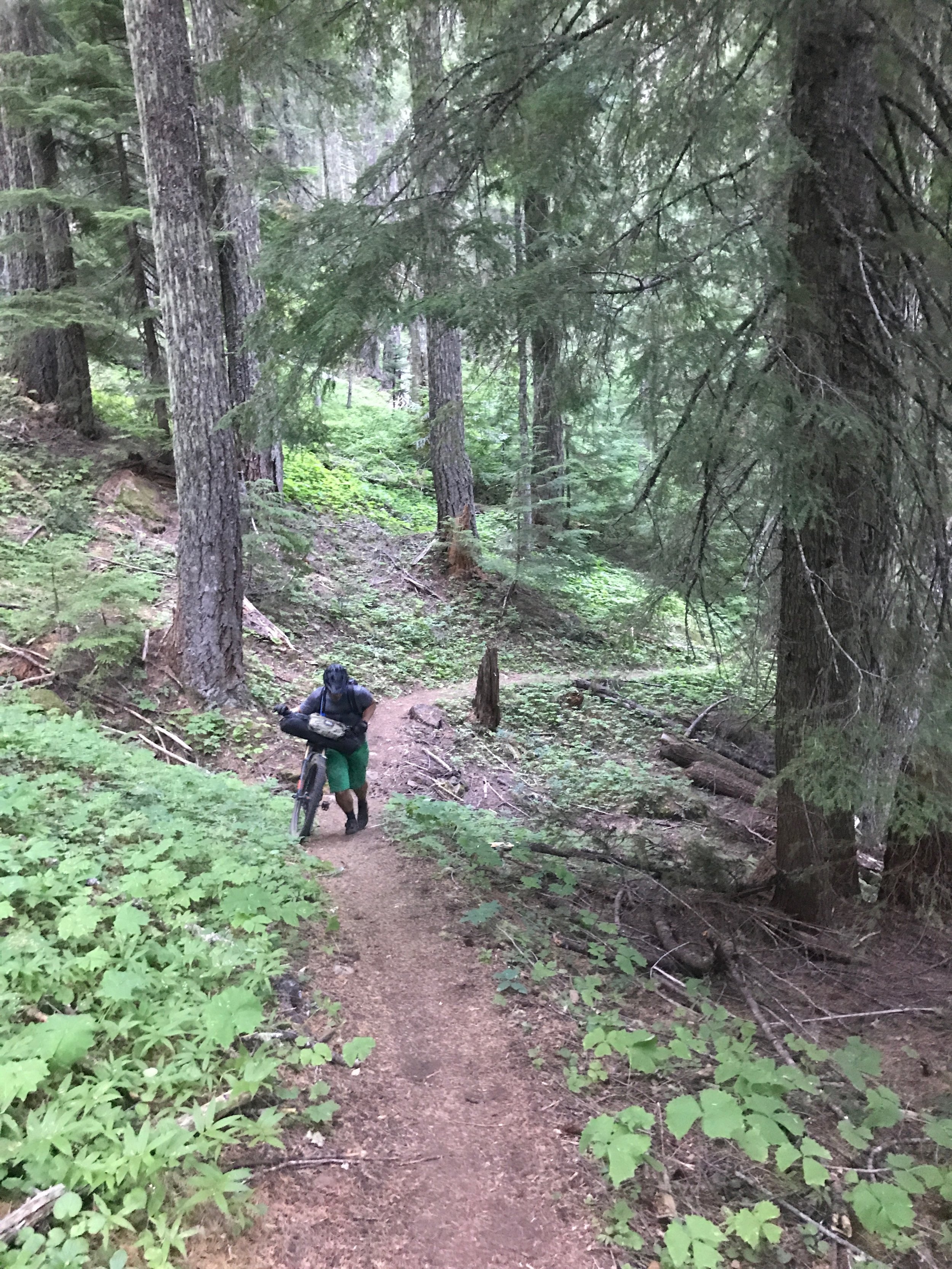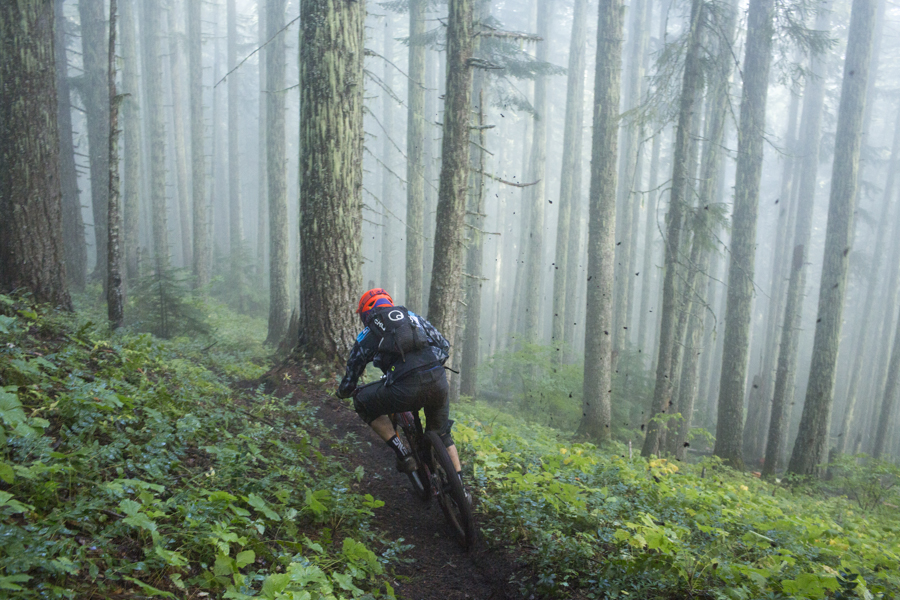STAGES - RIDING WITH POWER
Stages Power Meters
One of the things this website was designed to do was highlight local companies making a difference in cycling. Stages is one of those companies. For the longest time, riding with power was only for the pros and those obsessed with their performance – the realm of those seeking marginal gains. Road races are sometimes won by millimeters – after five hours of racing it comes down to the better bike throw.
My loaded Timber Trail bike complete with Stages XT power meter. I train because bikepacking can be hard.
You’re probably asking what does a power meter have to do with bikepacking? Well, I’m here to say it’s simply one more tool at your disposal to improve your cycling. Bikepacking involves loading up your MTB and pedaling it and/or pushing it up and over lots of hills. Are you ready for that? If you have any desire to go faster, farther, or ride more efficiently, at some point you need to pay attention to HOW you’re riding. Many of us are content to jam along without wondering if we're getting the most out of their lungs and legs. A great many of us spend hours and hours on the bike in hopes of creating a more efficient engine. I have to confess that I’m one of those cyclists. I log commute hours, road hours, MTB hours mostly for fun and fitness, but the truth is that I want to be the best cyclist I can be. It’s not for ego and it’s certainly not for Strava KOMs. I’m done racing years ago. These days my goal is just maximizing my time and finding out what my body can do. I’ve changed my goals, but I’m still ambitious and I don’t want to log a bunch of “junk miles” That doesn’t mean I’m always pinned, but it does mean I pay attention to how I’m riding.
Why get a power meter? Because you want detailed information for the amount of energy you’re putting into your cranks. For a bikepacker, it can help you gauge your effort both while preparing for a big ride and while riding it. In short, it helps you pace yourself. Time on the bike training is maximizing what your body can do, but during an event, having real-time data about the work you’re doing in more information you have about pacing yourself. There is something to be said for paying attention to your body and becoming intuitive about what your body is capable of, but at the same time, power meters are another tool that can help you learn what your body is capable of, and it’s a tool to help you achieve your goals. I won’t get into numbers, there is plenty of time for you to learn your own numbers – think about doing the occasional test to learn about your VO2 max and lactate threshold – basically you’ll test what the highest power you can sustain for 20 minutes multiply by 0.95. Measure this over time and you can see in black and white if your fitness is improving. Most of us have limited time to ride a bike, so if you’re preparing for your next big adventure, you want to maximize the benefits from the time you spend on your bike. If you’re not doing hard efforts and recovering, you’re not getting the most out of your cycling.
The reward for the push. Harry at the summit of Crescent, a massive highlight on the Oregon Timber Trail
Why Stages? Stages is the most affordable power meter and the easiest to use. You simply replace your non-driveside crank with one that has the Stages meter attached. I’m using my Garmin 500, which is a bit of an older unit, but still works for displaying power. The process of synching does take a few steps, but is relatively simple and you’ll be up and running pretty quickly. I’m new to power meters and there was a bit of a learning curve. I enjoyed learning about VO2 max tests and figuring out my numbers. I had trained in the past with heart rate, so riding in a zone was natural for me, I just replace my heart rate numbers with watts and keep jamming!
My Timber Trail bike cockpit. Garmin Etrex 20 for navigation, Garmin 500 for ride stats…and water. Lots of water.
I had trouble keeping my Garmin synched. Talking to a friend at Stages, I learned that I needed to clear out all of my old training activities on the Garmin unit and install a fresh battery – the battery location isn’t ideal – your crank can collect dirt and water, so you’ll need to pay attention to that. Another critique of the unit is that it only measures one leg, so if you’ve got an imbalance right to left, you should look at one of their newer bi-lateral or dual power meters that measure both sides. I think I might be a candidate for one, since I have an old sciatic injury that still pops up occasionally and I think it may affect my power on my left side. So, in summary, Stages is one the more affordable units, is relatively easy to use, and now has offers a dual meter. Product support is a consideration as well. Stages is run by friendly Portland cyclists and they’re there to help you. When you’re ready to get the most out of your time on the bike, check out Stages.






